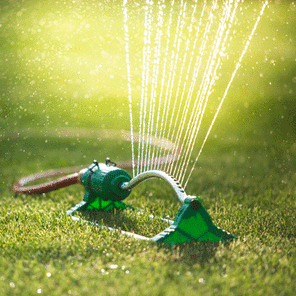Ranging from McLennan County to the Red River, the Woodbine Aquifer furnishes seventeen counties with water. Though technically a minor aquifer, it is one of the most important sources of water for northeastern Texas. The aquifer's water is used for livestock supply, municipal needs, domestic consumption, and industrial cooling; it is also used for irrigation, though on a smaller scale. The aquifer is located within the Woodbine Formation, a geological formation that preserves fossils from the late Cretaceous period. It overlaps with the Trinity Aquifer, another important source of water for the region.
Composition
Geologists usually divide the Woodbine Aquifer into northern and southern sections. The southern part is made of sandstone and sand, along with interbedded layers of shale and clay. The northern part is further divided into three areas known as the Upper, Middle, and Lower Woodbines. The Upper Woodbine is made of reddish-brown sandstone mixed in with shale. The Middle Woodbine contains reddish sandstone, shale, brown clay, and grey clay. The Lower Woodbine contains ironstone, sandstone, and sandy clay. The aquifer ranges up to 600 feet in thickness, though the portions that hold freshwater average only 160 feet. Water can be found in this aquifer as much as two thousand feet below the earth's surface.
The water from this aquifer ranges from fresh to moderately saline. Water increases in salinity the farther below the surface it is found. Water from above one thousand five hundred feet is fresh, while water from below that depth can contain as much as four 1000 milligrams of total dissolved solids per liter; water of this quality must be treated before it can be consumed. The aquifer's water also contains high levels of iron.
Water Conservation
Wells connected to this aquifer yield between 100 and 600 gallons of water per minute. The aquifer as a whole was producing 16 million gallons of water per day in 1985. Since then, local officials and residents have grown concerned that the aquifer cannot sustain such high levels of water use. Although water level decline has not been as serious in the Woodbine Aquifer as it has been in the Trinity Aquifer, the Woodbine has the added problem of increasing contamination. Dissolved levels of chloride, fluoride, and sulfate have grown too great. Communities that rely on the aquifer have reduced their water use and changed their water practices, moderating the degree of water level decline. Concerns remain, however, regarding water contamination.
Interested in exploring the Woodbine Aquifer for water? Talon/LPE Drilling Services specializes in air and mud drilling, hollow stem auger drilling, and soil boring. We also offer well and drilling products to help with wells that are already in place.

